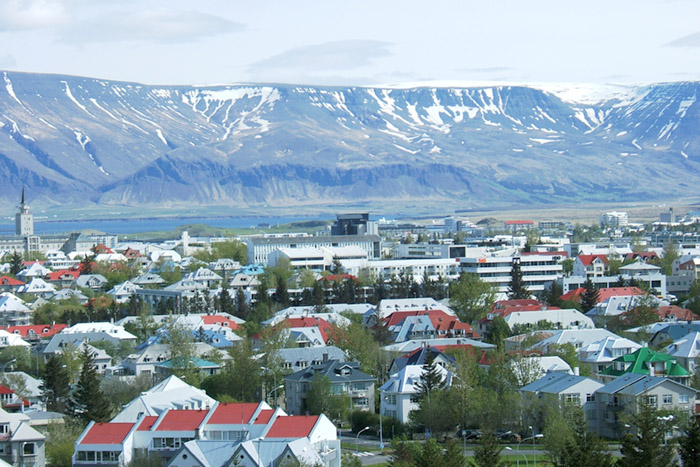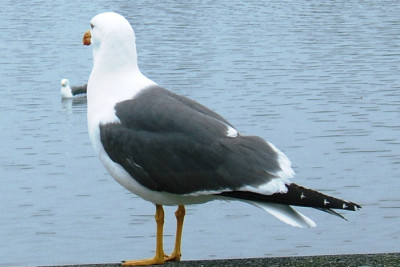Iceland: Wonderscape of Ice and Fire
Iceland is an island of drop-dead gorgeous snow-capped mountains, waterfalls, and geysers. It’s also the first county in the world to generate all of its electricity from clean, renewable sources. In June, EarthTalk’s Ethan Goffman took part in a Montgomery College sustainability trip to Iceland that explored that country’s geothermal and hydro power sources, but also its environmental challenges: erosion from overgrazing, invasive species, and rapid glacier melt due to global climate change. What follows is a record of that trip, in pictures and video.
Montgomery College students and faculty at Svinafellsjokull glacier. Credit: Amalie Elfallah.
View of Reykjavik, Iceland’s capital. With only 300,000 people, the island is sparsely populated.
INTERVIEW: Audur Bjorg Sigurjonsdottir
The Director of the Geothermal Energy Exhibition in Reykjavik, Iceland discusses why geothermal could be the “it” alternative renewable energy source of the future…
Reykjanes Hot Spring: Located on the fault between the Eurasian and North American tectonic plates, Iceland is suffused with geysers and volcanoes, which act as a physical manifestation of the geothermal power that provides them with so much clean energy. Credit: Craig Benson.
The Hellisheidi geothermal power plant, the largest in Iceland, provides heating, hot water, and electricity.
INTERVIEW: Craig Benson
Associate Professor of Chemistry at Montgomery College discusses why a sustainability tour to Iceland…
Montgomery College students prepare to explore the Leidarendi lava tube cave. Photo Credit: Craig Benson.
Vatnajokull, the largest glacier in Europe.
The Jokuslaron glacier lagoon, which was created in 1932 by the melting of the largest glacier in Europe, Vatnajokull. The lagoon currently covers 25 square kilometers.
INTERVIEW: Asdis Birgisdottir
This designer and trekking guide who has traveled Iceland on foot, by horseback and by super-jeep — and has worked at the Þingvellir National Park as a supervisor with diving and as a ranger.
Lambs are ubiquitous throughout Iceland and are eaten in a variety of dishes, as well as providing wool. They are free-range animals nourished without hormones or antibiotics on land free from pesticides. However, their grazing has been a major source of erosion in the 1000 + years that humans have inhabited Iceland. Credit: Amalie Elfallah.
The Icelandic horse, a small, sturdy breed. Riding is popular in Iceland and the horses are also bred for export. Credit: Charmaine Weston.
A sea gull looks toward Reykjavik city hall.
Fridheimar Greenhouse. Credit: Charmaine Weston.
INTERVIEW: Knutur Rafn Armann
The Managing Director and Owner of the Fridheimer Greenhouse discusses how local agriculture is a key component to climate mitigation…
Despite their environmental awareness, Icelanders eat large quantities of meat, particularly lamb and fish which are abundant on the island. They are not averse to more exotic species and continue to hunt whales, although in limited numbers.
Svartifoss waterfall in southern Iceland. Due to its geography, with steep mountains and multiple glaciers, Iceland is abundant with waterfalls.
At Eldgjarhraun, the largest extant lava field on Earth. Credit: Amalie Elfallah.















